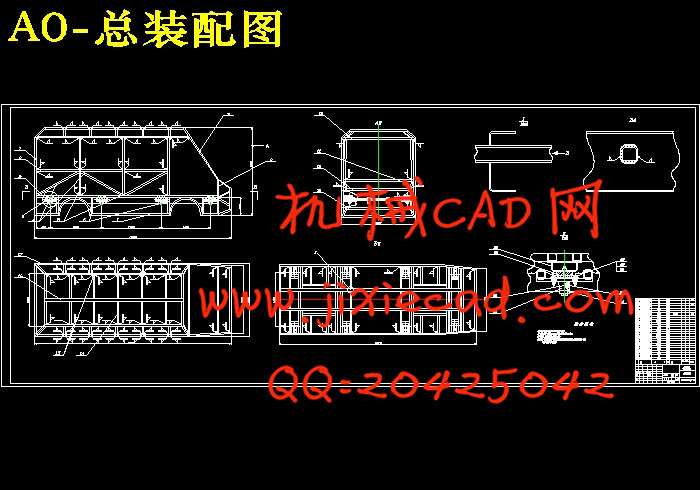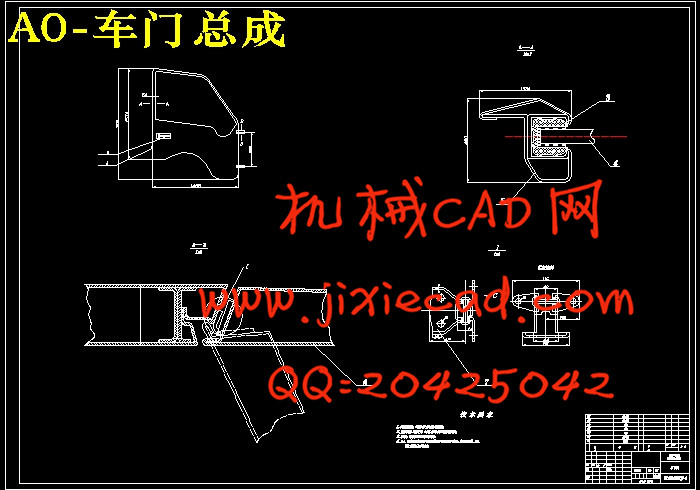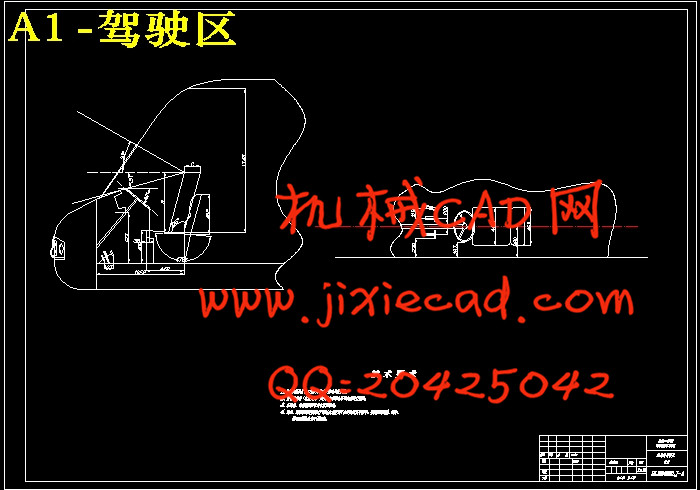设计简介
摘 要
本文简述了旅居车的发展及现状,分析了在我过发展房车的可能性及重要性。基于对国内外房车发展趋势的理解和认识,介绍了再中型客车的底盘基础上改装一款更加人性化、合理化的旅游居住型房车的设计方案。
在查阅大量相关资料的基础上,通过归纳总结,通过对所选三类底盘进行个案的研究,对所需的各项数据定量分析。对市面上现有旅居车进行观察,总结其车身造型及乘客区、驾驶区设计的经验。
设计基于轻型客车三类底盘,完成了车身骨架的设计、车身外部造型的设计、驾驶区及乘客区的布置方案的设计、以及对辅助系统设备的选择。
整车设计完成之后,对关键部件进行校核合,所选用零件符合要求。并对旅居车的使用要求进行分析,经过对局部的修改,得到一个可以利用的设计方案。
关键词:改装设计;客车;旅居车;汽车车身;三类底盘
ABSTRACT
This paper describes the development and Motorhome, analyzed the development of the car I had the possibility and importance. Based on trends in domestic and international car understanding and awareness of medium-sized passenger cars are introduced and then modified based on the chassis a more humane, reasonable living type of tourist car design.
Access to relevant information in a large number of basis, through the summary, three types of chassis through the selected case studies, on quantitative analysis of the data required. Existing caravans on the market to observe, review their body shape and passenger area, driving area design experience.
Light Bus chassis design is based on completed design of the body frame, the design of the exterior styling, driving area and passenger area of the layout of the design, as well as the choice of auxiliary system equipment.
Vehicle design is complete, the key components of the check and, the selection of components to meet the requirements. Motorhome requirements and analysis, through to the local changes to get a design that can be used.
Keywords: Design modifications;Bus;Motorhome;Auto body;Three types of chassis
目 录
摘要………………………………………………………………………………Ⅰ
Abstract ………………………………………………………………………………Ⅱ
第1章 绪论 …………………………………………………………………………1
1.1 旅居车的发展现状 ……………………………………………………………1
1.2 选题的目的、依据和意义 ……………………………………………………3
1.3 设计的基本内容 ………………………………………………………………4
1.4 拟解决的主要问题 ……………………………………………………………4
1.5 主要技术路线 …………………………………………………………………5
第2章 总体方案的选择……………………………………………………………6
2.1 总布置的设计原则 ……………………………………………………………6
2.2 底盘类型的选择 ………………………………………………………………7
2.2.1 二类汽车底盘、三类汽车底盘介绍…………………………………7
2.2.2 本次设计中选用底盘类型介绍及其方案分析………………………9
2.3 车身设计方案的选择 …………………………………………………………9
2.3.1 非承载式(有车架式)车身简介与分析 ……………………………10
2.3.2 半承载式车身简介与分析……………………………………………11
2.3.3 承载式(无车架式)车身简介与分析 ………………………………12
2.3.4 本次设计中采用车身类型介绍及其方案分析 ……………………15
2.4 本章小结 ……………………………………………………………………15
第3章 三类底盘的选择…………………………………………………………16
3.1 三类底盘的选型 ……………………………………………………………16
3.2 总体布置的原则 ……………………………………………………………16
3.3 整车参数的确定 ……………………………………………………………17
3.3.1 装载质量和总质量的确定……………………………………………17
3.3.2 轴载质量的确定 ……………………………………………………17
3.3.3 尺寸参数的确定 ……………………………………………………18
3.4 本章小结 ……………………………………………………………………18
第4章 旅居车车身的设计 ………………………………………………………19
4.1 车身骨架的设计………………………………………………………………19
4.1.1 杆件的设置……………………………………………………………19
4.1.2 杆件截面形状与刚度的关系…………………………………………20
4.1.3 横、纵梁连接点解决方案……………………………………………21
4.2 车体板壳的设计………………………………………………………………21
4.2.1 板壳的构造、过度和连接……………………………………………23
4.2.2 板壳的合理分块………………………………………………………23
4.2.3 提高零件的刚度………………………………………………………24
4.3 旅居车车身设计………………………………………………………………25
4.4 本章小结………………………………………………………………………30
第5章 车门及驾驶室的设计 ……………………………………………………31
5.1 车门的设计……………………………………………………………………31
5.1.1 车门的类型……………………………………………………………31
5.1.2 车门铰链………………………………………………………………32
5.1.3 车门的结构……………………………………………………………33
5.1.4 车门总成设计方案的选择……………………………………………34
5.1.5 本次设计中采用车门设计方案介绍及分析…………………………34
5.1.6 本次旅居车车门设计…………………………………………………35
5.2 驾驶区的布置设计……………………………………………………………36
5.3 本章小结………………………………………………………………………40
第6章 乘客区的布置 ……………………………………………………………41
6.1 乘客区内部设备摆放位置布置 ……………………………………………41
6.2 本次旅居车乘客区的布置 …………………………………………………41
6.3 辅助系统设备的选择 ………………………………………………………44
6.3.1 旅居车电视的选择……………………………………………………44
6.3.2 旅居车热水器及淋浴喷头的选择……………………………………45
6.3.3 水泵的选择……………………………………………………………46
6.3.4 旅居车电磁炉的选择…………………………………………………46
6.3.5 旅居车逆变电源的选择………………………………………………46
6.4 本章小结 ……………………………………………………………………47
结论……………………………………………………………………………………48
参考文献………………………………………………………………………………49
致谢……………………………………………………………………………………50
本文简述了旅居车的发展及现状,分析了在我过发展房车的可能性及重要性。基于对国内外房车发展趋势的理解和认识,介绍了再中型客车的底盘基础上改装一款更加人性化、合理化的旅游居住型房车的设计方案。
在查阅大量相关资料的基础上,通过归纳总结,通过对所选三类底盘进行个案的研究,对所需的各项数据定量分析。对市面上现有旅居车进行观察,总结其车身造型及乘客区、驾驶区设计的经验。
设计基于轻型客车三类底盘,完成了车身骨架的设计、车身外部造型的设计、驾驶区及乘客区的布置方案的设计、以及对辅助系统设备的选择。
整车设计完成之后,对关键部件进行校核合,所选用零件符合要求。并对旅居车的使用要求进行分析,经过对局部的修改,得到一个可以利用的设计方案。
关键词:改装设计;客车;旅居车;汽车车身;三类底盘
ABSTRACT
This paper describes the development and Motorhome, analyzed the development of the car I had the possibility and importance. Based on trends in domestic and international car understanding and awareness of medium-sized passenger cars are introduced and then modified based on the chassis a more humane, reasonable living type of tourist car design.
Access to relevant information in a large number of basis, through the summary, three types of chassis through the selected case studies, on quantitative analysis of the data required. Existing caravans on the market to observe, review their body shape and passenger area, driving area design experience.
Light Bus chassis design is based on completed design of the body frame, the design of the exterior styling, driving area and passenger area of the layout of the design, as well as the choice of auxiliary system equipment.
Vehicle design is complete, the key components of the check and, the selection of components to meet the requirements. Motorhome requirements and analysis, through to the local changes to get a design that can be used.
Keywords: Design modifications;Bus;Motorhome;Auto body;Three types of chassis
目 录
摘要………………………………………………………………………………Ⅰ
Abstract ………………………………………………………………………………Ⅱ
第1章 绪论 …………………………………………………………………………1
1.1 旅居车的发展现状 ……………………………………………………………1
1.2 选题的目的、依据和意义 ……………………………………………………3
1.3 设计的基本内容 ………………………………………………………………4
1.4 拟解决的主要问题 ……………………………………………………………4
1.5 主要技术路线 …………………………………………………………………5
第2章 总体方案的选择……………………………………………………………6
2.1 总布置的设计原则 ……………………………………………………………6
2.2 底盘类型的选择 ………………………………………………………………7
2.2.1 二类汽车底盘、三类汽车底盘介绍…………………………………7
2.2.2 本次设计中选用底盘类型介绍及其方案分析………………………9
2.3 车身设计方案的选择 …………………………………………………………9
2.3.1 非承载式(有车架式)车身简介与分析 ……………………………10
2.3.2 半承载式车身简介与分析……………………………………………11
2.3.3 承载式(无车架式)车身简介与分析 ………………………………12
2.3.4 本次设计中采用车身类型介绍及其方案分析 ……………………15
2.4 本章小结 ……………………………………………………………………15
第3章 三类底盘的选择…………………………………………………………16
3.1 三类底盘的选型 ……………………………………………………………16
3.2 总体布置的原则 ……………………………………………………………16
3.3 整车参数的确定 ……………………………………………………………17
3.3.1 装载质量和总质量的确定……………………………………………17
3.3.2 轴载质量的确定 ……………………………………………………17
3.3.3 尺寸参数的确定 ……………………………………………………18
3.4 本章小结 ……………………………………………………………………18
第4章 旅居车车身的设计 ………………………………………………………19
4.1 车身骨架的设计………………………………………………………………19
4.1.1 杆件的设置……………………………………………………………19
4.1.2 杆件截面形状与刚度的关系…………………………………………20
4.1.3 横、纵梁连接点解决方案……………………………………………21
4.2 车体板壳的设计………………………………………………………………21
4.2.1 板壳的构造、过度和连接……………………………………………23
4.2.2 板壳的合理分块………………………………………………………23
4.2.3 提高零件的刚度………………………………………………………24
4.3 旅居车车身设计………………………………………………………………25
4.4 本章小结………………………………………………………………………30
第5章 车门及驾驶室的设计 ……………………………………………………31
5.1 车门的设计……………………………………………………………………31
5.1.1 车门的类型……………………………………………………………31
5.1.2 车门铰链………………………………………………………………32
5.1.3 车门的结构……………………………………………………………33
5.1.4 车门总成设计方案的选择……………………………………………34
5.1.5 本次设计中采用车门设计方案介绍及分析…………………………34
5.1.6 本次旅居车车门设计…………………………………………………35
5.2 驾驶区的布置设计……………………………………………………………36
5.3 本章小结………………………………………………………………………40
第6章 乘客区的布置 ……………………………………………………………41
6.1 乘客区内部设备摆放位置布置 ……………………………………………41
6.2 本次旅居车乘客区的布置 …………………………………………………41
6.3 辅助系统设备的选择 ………………………………………………………44
6.3.1 旅居车电视的选择……………………………………………………44
6.3.2 旅居车热水器及淋浴喷头的选择……………………………………45
6.3.3 水泵的选择……………………………………………………………46
6.3.4 旅居车电磁炉的选择…………………………………………………46
6.3.5 旅居车逆变电源的选择………………………………………………46
6.4 本章小结 ……………………………………………………………………47
结论……………………………………………………………………………………48
参考文献………………………………………………………………………………49
致谢……………………………………………………………………………………50






